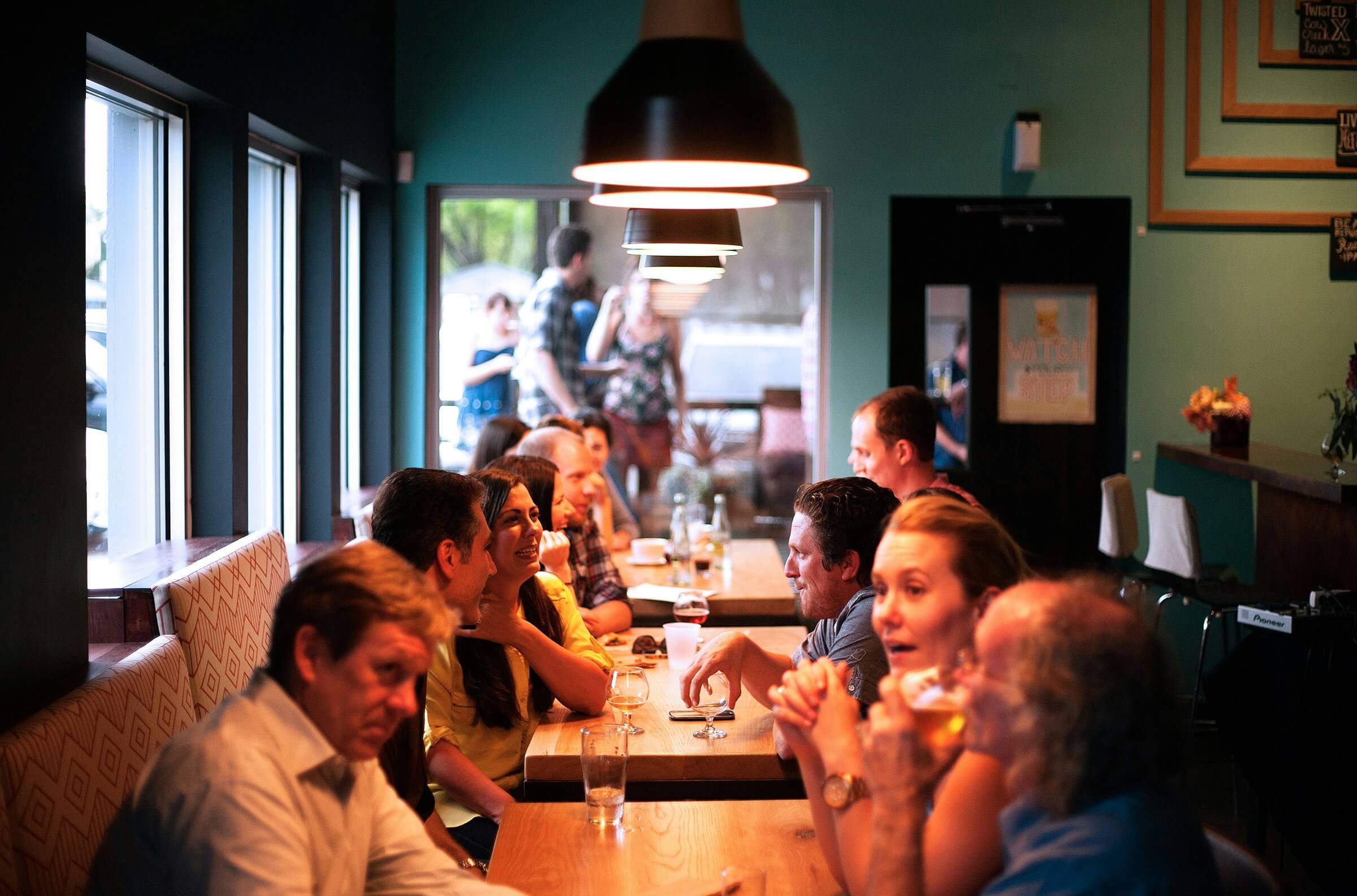Throughout our previous articles, we’ve delved into the fascinating world of dinners with strangers: from the surprising benefits of these encounters to the way Timeleft orchestrates these experiences through our algorithm. We’ve also shared essential tips for navigating the world of shared meals with strangers with ease.
Today, we’re going to dive into the heart of these interactions by unveiling the 10 types of people you’re likely to meet around the table.
1. The introvert
Often thoughtful and reserved, the introvert may prefer listening over speaking. They’re usually good listeners and can offer deep insights when they feel comfortable sharing.
- If You’re an Introvert: Seize moments of quiet to introduce topics you’re passionate about. This will help you open up more naturally.
- Facing an Introvert: Gently encourage participation without forcing. Asking open-ended questions can help them express themselves more freely.
2. The Extrovert
Energetic and often sociable, the extrovert loves to engage in conversation and can be the social driver of the group. They enjoy meeting new people and can enliven the table with their enthusiasm.
- If You’re an Extrovert: Moderate your enthusiasm to allow others to participate as well. Your energy can be a catalyst for a dynamic atmosphere.
- Facing an Extrovert: Take advantage of their energy to explore new topics. They can often be interesting conversation starters.
3. The Contemplative
This type of individual likes to take their time to think before speaking. They appreciate meaningful conversations and often have interesting insights to share. They may not talk much, but when they do, it’s often relevant and thoughtful.
- If You’re Contemplative: Share your thoughts when you feel inspired; your perspective can greatly enrich the discussion.
- Facing a Contemplative: Value their thoughtful approach by giving them time to formulate their thoughts and appreciating the depth of their contributions.
4. The Adventurer
Always in search of new experiences and stories to tell, the adventurer can often entertain the group with tales of their travels or unique experiences. They are often open to trying new things and can encourage others to step out of their comfort zone.
- If You’re an Adventurer: Your stories can be an excellent way to break the ice. Don’t hesitate to share your experiences to inspire others.
- Facing an Adventurer: Show interest in their stories. Asking about their experiences can encourage exciting dialogue.
5. The Natural Leader
This person often has a presence that can bring the group together. They don’t necessarily seek to be in charge, but their confidence and ability to navigate conversations naturally put them in a leadership position. They can help guide discussions, ensure everyone is heard, and keep the dinner on a positive note.
- If You’re a Natural Leader: Use your ability to lead to ensure the conversation remains inclusive and everyone gets a chance to speak.
- Facing a Natural Leader: Don’t be intimidated. Bring your ideas to the table and see how the leader can help you develop them.
6. The Connector
This person has a gift for making people feel comfortable and creating connections between participants. They can introduce topics that encourage others to open up and share. They are often adept at detecting common interests and building bridges between people.
- If You’re a Connector: Highlight your talent for bringing people together. Introduce topics that can reveal common interests.
- Facing a Connector: Engage in the topics they bring up. Their skill at creating connections can open opportunities for deeper interactions.
7. The Observer
They tend to be quieter, watching and listening, absorbing the atmosphere and dynamics around the table. Observers can offer insightful comments and are often very perceptive of the needs and feelings of others at the table.
- If You’re an Observer: Your tendency to listen and observe can give you a unique perspective. Share these observations when they can add value.
- Facing an Observer: Acknowledge their presence and silent contribution. A nod or a smile can encourage them to share their viewpoint.
8. The Humorist
Always ready with a joke or a funny anecdote, they lighten the mood and make everyone laugh.
- If You’re a Humorist: Your humor can relax the atmosphere, but be mindful to respect everyone’s boundaries to avoid offending.
- Facing a Humorist: Laugh with them, but help them maintain balance so humor doesn’t overshadow the substance of the conversation.
9. The Pessimist
This type of individual tends to see the glass as half empty and can often bring a negative note to the conversation. They may speak of their own experiences in an unfavorable light and, unintentionally, dampen the mood of the table by highlighting negative aspects of topics discussed.
- If you are a pessimist: Try to recognize the positive aspects of situations to avoid dampening the mood. Your caution can be a strength if used well.
- Facing a pessimist: Don’t systematically counter them, but offer an alternative perspective. Their criticism can be a starting point for constructive reflection.
10. The Provocateur
This person enjoys debating and can often turn a friendly discussion into a heated debate. They can be perceived as provocative, seeking to challenge others’ opinions rather than listening or understanding their point of view, which can create tension and make the conversation uncomfortable for the other guests.
- If you are a provocateur: Channel your energy into constructive debates and respect others’ viewpoints.
- Facing a provocateur: Don’t take things personally. Use this dynamic to explore ideas in depth without letting the conversation become confrontational.
The Importance of Flexibility
Everyone can embody different typologies depending on the moment or context. Recognizing these tendencies in oneself and others is essential for contributing to a rewarding dining experience. It’s by adapting and learning from others that we make the most of these unique encounters. Each dinner is an opportunity to learn and grow together.
Conclusion
Dinners among strangers are microcosms of society, reflecting the richness of human diversity. By understanding and interacting with these 10 typologies, we weave stronger and more meaningful connections.
In our next article, we explore “50 Questions for a Lively Dinner,” promising to spice up these meetings and ensure that every moment spent together is a memorable adventure.
Who Are We?
Timeleft is much more than a new app. It’s an invitation to redefine the urban experience, to celebrate human connection, and to embrace the adventure of social life with an open mind.
Our numbers speak for themselves:
- 20,000+ tickets sold in 6 months
- Events in France, United Kingdom, Spain, Portugal, Germany and more
- A community of 60,000 enthusiasts
How to dive into the adventure?
- Sign up on Timeleft.com: Our personality test is the key to finding your ideal table.
- Book your spot: On Wednesdays at 8 PM, the world opens up


